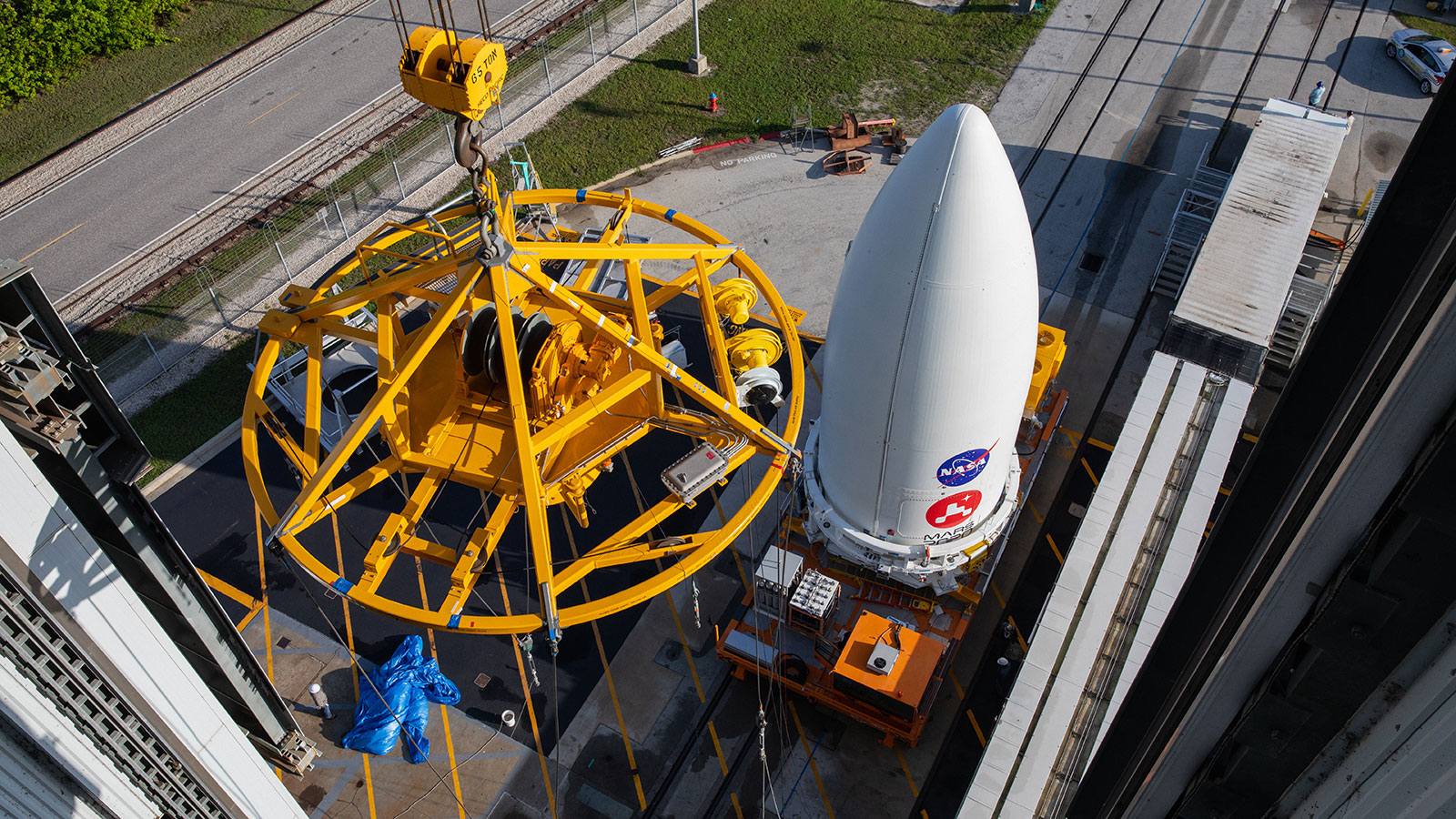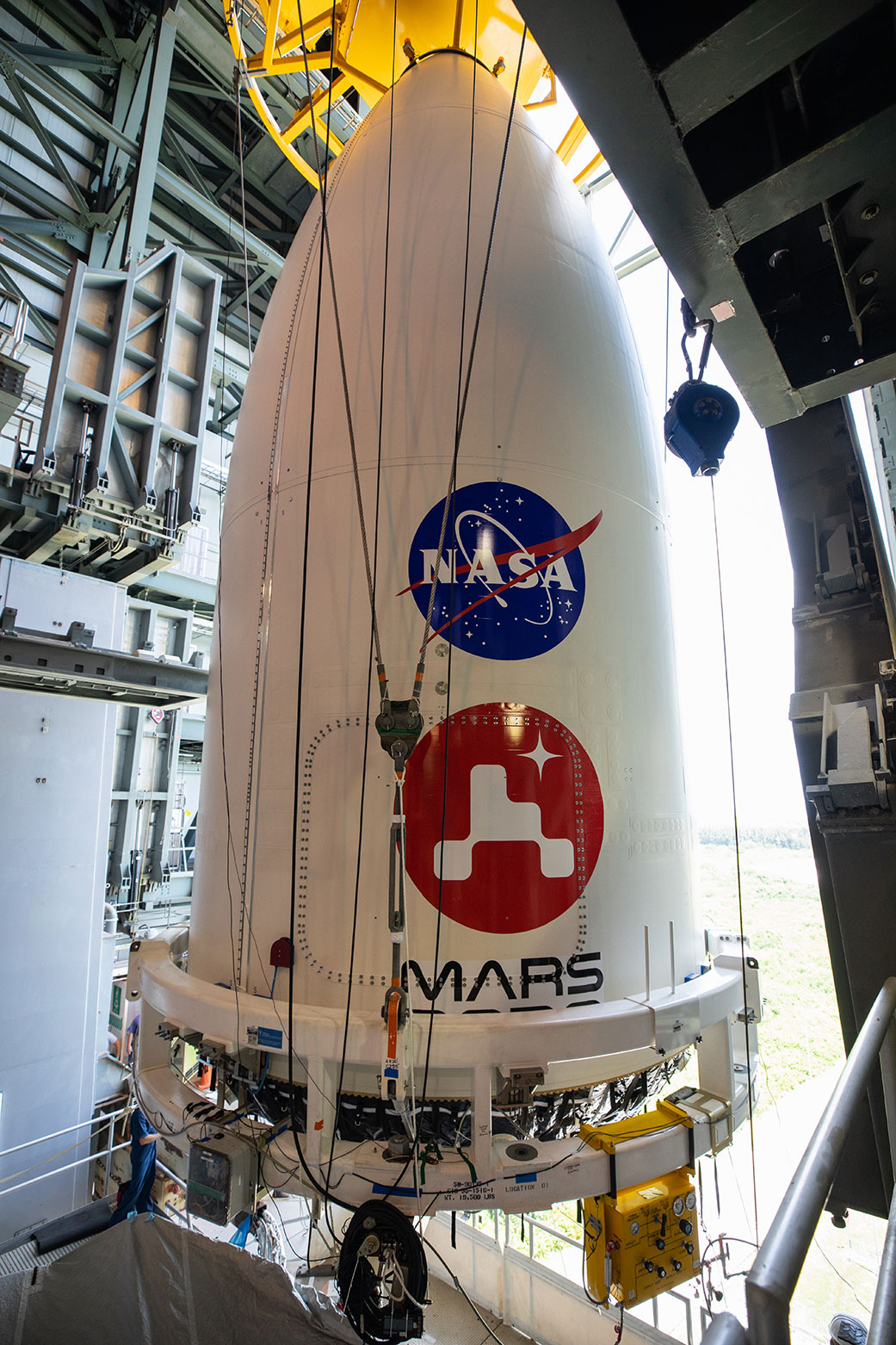
NASA's next Mars rover has been attached to its rocket ride.
The Mars rover Perseverance was stacked atop its United Launch Alliance Atlas V rocket Tuesday (July 7) at Florida's Cape Canaveral Air Force Station, a huge milestone ahead of the mission's planned July 30 launch.
"I have seen my fair share of spacecraft being lifted onto rockets," John McNamee, project manager for Perseverance's mission, which is known as Mars 2020, said in a statement Thursday (July 9).
"But this one is special, because there are so many people who contributed to this moment," said McNamee, who's based at NASA's Jet Propulsion Laboratory in Pasadena, California. "To each one of them I want to say, We got here together, and we'll make it to Mars the same way."
Related: NASA's Mars 2020 rover Perseverance in pictures

A 60-ton hoist on the roof of the Vertical Integration Facility (VIF), at Cape Canaveral's Space Launch Complex 41, lifted the protective payload fairing containing Perseverance and its associated hardware 129 feet (39 meters) high on Tuesday, placing it on top of the Atlas V, NASA officials said. Engineers then made the required physical and electrical connections between the spacecraft and the rocket.
The mating milestone ushers in the final phase of Mars 2020 prelaunch testing, which can assess the rover and rocket both separately and together. The duo will remain based at the VIF until July 28, when they'll travel by rail to the launch pad, making the 1,800-foot (550 m) journey in about 40 minutes, NASA officials said.
Get the Space.com Newsletter
Breaking space news, the latest updates on rocket launches, skywatching events and more!
Perseverance doesn't have to get off the ground on July 30; the $2.7 billion mission's launch window runs through Aug. 15. (That window was once considerably wider. It originally opened on July 17, but several processing issues pushed the target date back 13 days.)
Whenever Perseverance launches this summer, it will land on Feb. 18, 2021, inside Mars' Jezero Crater. The 28-mile-wide (45 kilometers) Jezero contained a lake and a river delta in the ancient past, and the car-sized robot will search the area for signs of long-dead life.
Perseverance will do a variety of other work as well, from characterizing Jezero's geology to hunting for subsurface water ice to testing out gear that generates oxygen from Mars' thin, carbon dioxide-dominated atmosphere. The six-wheeled rover will also collect and cache several dozen samples, which will be recovered and returned to Earth, perhaps as early as 2031, by a joint NASA-European Space Agency campaign.
And Perseverance will have some company during the long flight to Mars: a 4-lb. (1.8 kilograms) helicopter named Ingenuity, which is attached to the rover's belly. If all goes according to plan, Ingenuity will make a few short test flights in the Red Planet's skies, potentially paving the way for extensive aerial exploration by future Martian rotorcraft.
Mike Wall is the author of "Out There" (Grand Central Publishing, 2018; illustrated by Karl Tate), a book about the search for alien life. Follow him on Twitter @michaeldwall. Follow us on Twitter @Spacedotcom or Facebook.
Join our Space Forums to keep talking space on the latest missions, night sky and more! And if you have a news tip, correction or comment, let us know at: community@space.com.

Michael Wall is a Senior Space Writer with Space.com and joined the team in 2010. He primarily covers exoplanets, spaceflight and military space, but has been known to dabble in the space art beat. His book about the search for alien life, "Out There," was published on Nov. 13, 2018. Before becoming a science writer, Michael worked as a herpetologist and wildlife biologist. He has a Ph.D. in evolutionary biology from the University of Sydney, Australia, a bachelor's degree from the University of Arizona, and a graduate certificate in science writing from the University of California, Santa Cruz. To find out what his latest project is, you can follow Michael on Twitter.









